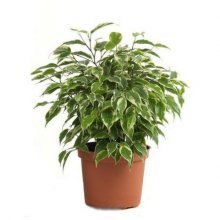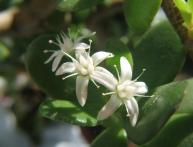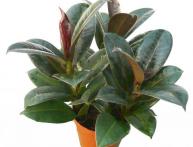How to properly care for ficus at home?
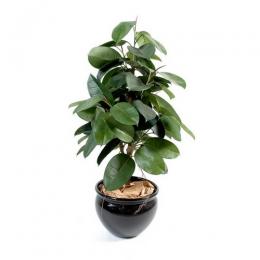
In his work entitled “Species of Plants” (1753), Carl Linnaeus first mentioned ficus and identified it as a separate genus, describing in detail the characteristic features of as many as seven species of this domestic plant. Nowadays, you can quite often find ficus on window sills in houses, apartments, and offices. They are often planted in winter gardens.
Interesting fact: this plant is attributed some magical qualities; it is said that it neutralizes negativity and can attract wealth and good luck to its owners into the house.
Content:
- A little about the history of ficus
- Caring for a plant at home
- Possible diseases and treatment methods for ficus
A little about the history of ficus
Ficus is one of the most common house plants. Its genus includes about 800 species, including shrubs, trees and even vines. The ficus genus includes both evergreen species, and deciduous. Many types of ficus grow to large sizes. This cultivated plant came to us from countries with a subtropical climate. These are mainly countries in Asia, America, Australia and Africa.
Ficus belongs to the mulberry family, has leaves in the shape of lobes or whole leaves, they are almost always glossy, shiny, but you can also find ficus with pubescent leaf blades.
Caring for a plant at home

Home care for ficus consists of the following procedures:
- Correct placement of plants in the room
- Regular moderate watering
- Timely small feeding
- If necessary, transplant
- Treatment for possible diseases
In general, ficus is not a capricious cultivated plant. A well-lit window sill near a window facing west or east, which receives a lot of natural, diffused light, is ideal for placing a ficus. If you place a potted plant in the shade, its branches will grow towards the light and the number of its leaves will decrease. It should also be remembered that it is advisable for the plant to avoid drafts.
Watering the ficus should be done regularly, more intensively in summer than in winter. However, it is important not to overdo it. Before the next watering, the soil should have time to dry out after the previous one and absorb moisture well. The water from the pan needs to be poured out. It will be better if you water the ficus with warm water or water at room temperature, and some botanists even insist on watering with almost hot water, since indoor plants cannot tolerate cold temperatures (including water).
Caring for ficus also involves spraying the leaves with settled water (at least 12 hours) or boiled water if the air in the room is dry.
From time to time you need remove dust from the surface of leaves using a damp sponge or handkerchief, or this can be done under a weak stream of a warm shower. Before you begin, you need to cover the soil with cling film or a plastic bag to avoid flooding the flower. After this procedure, the plant should dry in the bathroom, and after that you can carry it to its permanent place in the room. This will help avoid hypothermia of the ficus.
It is advisable that the temperature in the room where the ficus is located in winter should not be below +15 C and in summer should not exceed +30 C.
To ensure good growth of the plant, especially during the propagation period, you need to fertilize the ficus. In spring and summer, it is recommended to use nitrogen-containing mixtures. They make the plant more lush and dense due to the growth of greenery.
You can use nettle, mullein or wood ash infusion as a top dressing, or buy ready-made fertilizer mixtures, for example, Ideal, Humisol, Ficus, Palma, etc.
Fertilizers need to be applied once every two weeks. In the autumn-winter period, feeding the plant is not required, unless the conditions remain the same as in the summer (special lighting, warm air, / humidity). In this case, you need to fertilize the ficus no more than once every 1.5-2 months in an amount half as much as indicated.
It is advisable to replant the ficus only if necessary, if the pot has become small or cramped for it. But you still need to change the soil in the pot regularly (once every 1-2 years). To do this, you can use both ready-made purchased soil mixtures and self-prepared soil. If you chose the latter option, then for this you will need to mix chernozem, peat and sand in equal proportions. For adult plants It is recommended to add humus.
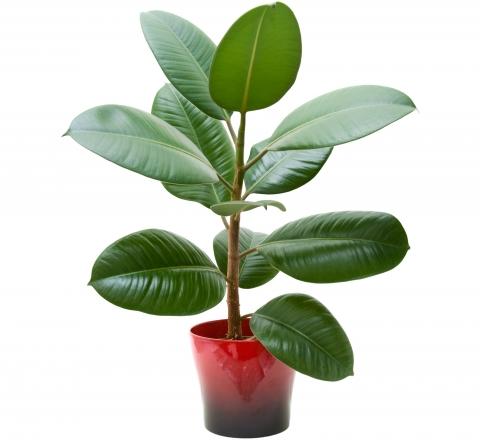
Using drainage at the bottom of the container will help prevent water from stagnating in the ground. To do this, you will need to cover the bottom of the pot with a layer of expanded clay or charcoal 1-2 cm thick and fill it with new soil on top.
Ficus propagates mainly by cuttings. To do this, the day before cutting the cuttings, you need to water the plant abundantly. You can trim semi-lignified cuttings from the top.For ficus with large leaves, you can remove cuttings with three leaves, and for those that have small leaves, those that grow up to 10-14 cm in length. Pruning should be done with a well-sharpened sharp knife, at a slight angle under the node of the cutting. The cut area should be washed to remove the milky juice, then wiped with a cloth and after an hour, sprinkled with activated charcoal or charcoal ground into a fine powder.
Possible diseases and treatment methods for ficus
The most common symptoms in the plant are:
- Falling leaves. This can be caused by a number of reasons: too much watering, freezing, lack of light or stress (for example, when transplanting or changing a permanent location). Do not be alarmed if you notice the falling of the lower tier of leaves on tree-like ficuses - this is a completely natural process.
- Formation of brown spots along the edges of leaves. This serves as a signal that the plant is too hot or does not have enough water. These spots can also be caused by drafts or too much fertilizing.
- Drying and curling of leaves. This defect occurs due to the fact that the air in the room is too dry.
- To “cure” a plant from the diseases described above, you only need to remove their cause.
- Shield. When this parasite appears, the ficus leaves become discolored and fall off. First you need to carefully examine the plant. If you find small insects on it that look like black and beige plaques, you need to immediately remove them from there with a cotton swab soaked in soapy water. If there are a lot of insects, you need to use actellik.
- Spider mite. If you find a cobweb between the leaves, this is a sign that the ficus has been damaged by this pest.To get rid of it, you need to regularly wash the plant in the shower and increase the level of air humidity in the room.
- Mealybug. The reason for its appearance is also dry air. To get rid of it, you need to remove the parasites with a cotton pad soaked in alcohol.
If all ficus care procedures are carried out correctly and in a timely manner, this cultivated plant will delight the eye at home, in the office or in the garden for many years.
Recommendations for proper care of ficus in the video:
Interesting information about the vegetable garden

